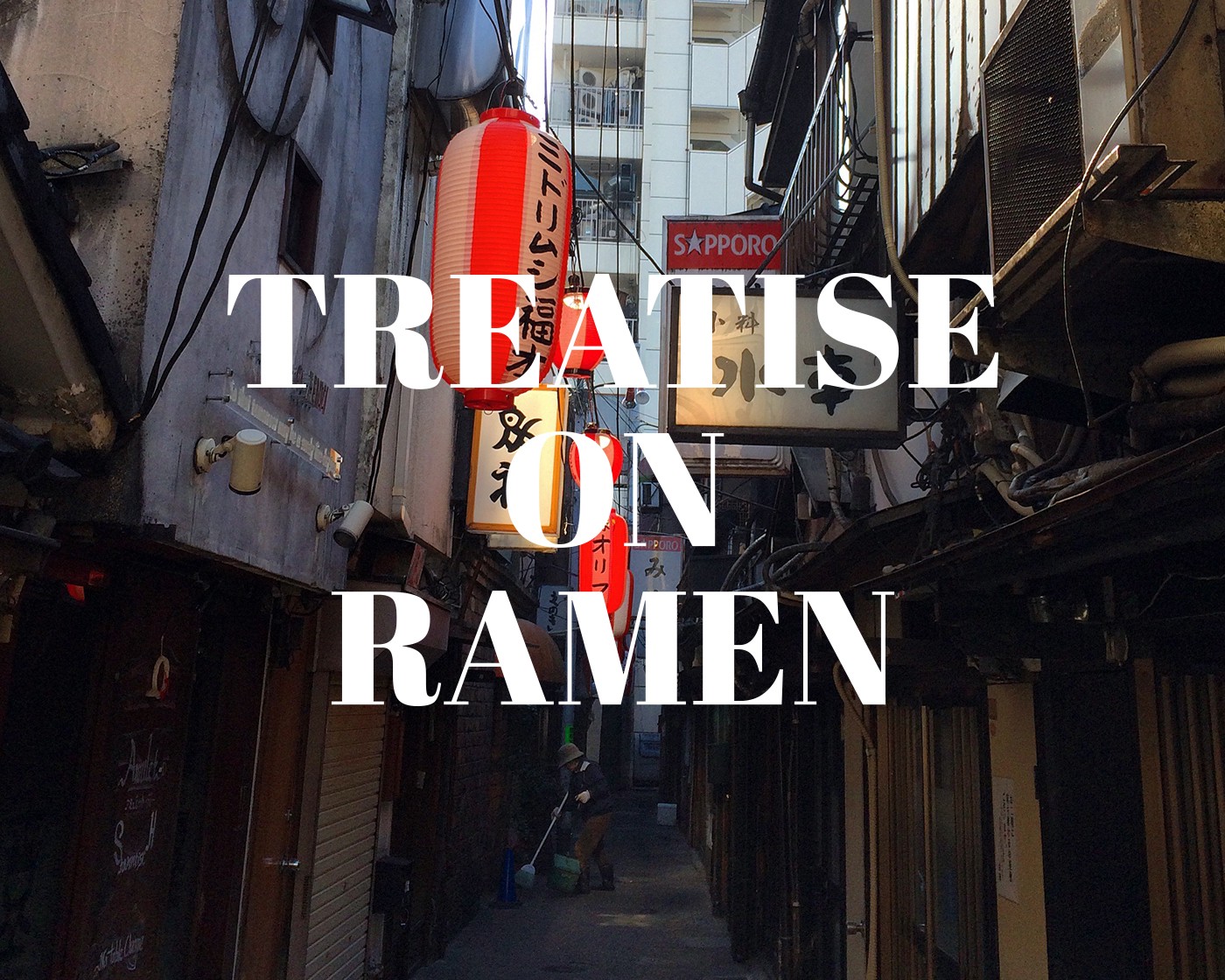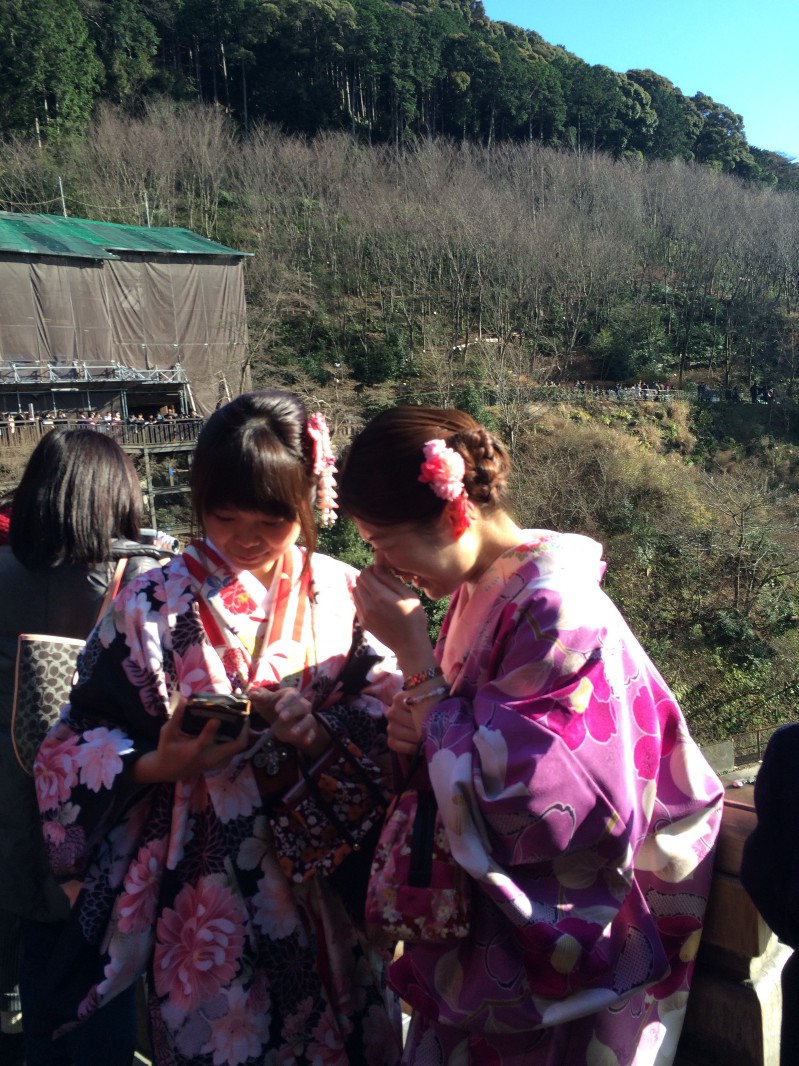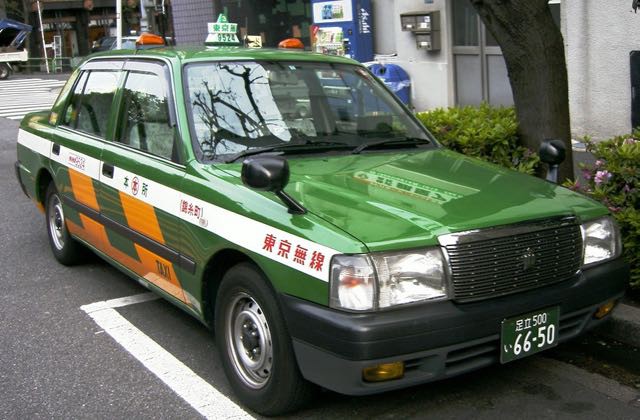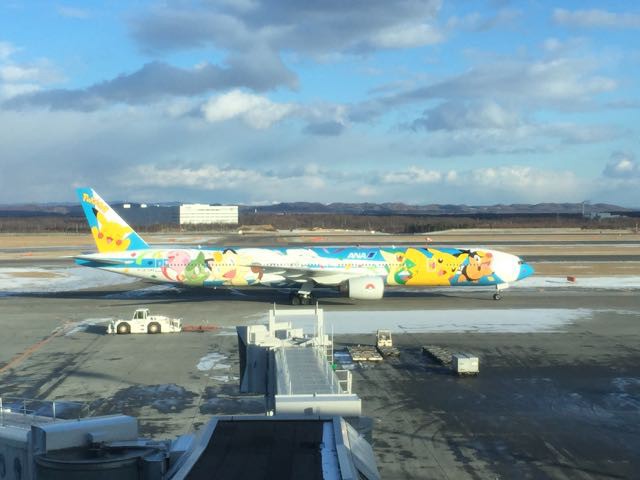Treatise On Ramen (Part 1): Top 10, Public Policy, Science & Technology, Transportation, Most Useful Apps & Websites
I moved from New York to Tokyo for work in December 2014 with very limited Japanese. Many friends have asked me about my experiences and for advice on where to go, what to see, and of course, what to eat and drink. I should have just created a blog. Although I just recently moved to Hong Kong, these reflections give you a glimpse into my experience. Thanks for taking the time to read.
Top 10
1. BET ON JAPAN
After World War 2, Japan was bankrupt and later achieved rapid growth to become the second largest economy in the world, until surpassed by China in 2010. Since the bursting of its stock and real-estate bubbles in the 1990s, Japan has wobbled through two “lost decades” of stalled real growth and deflation. However, Japan has experienced consistently positive growth in GDP per capita and labor productivity. The “Land of the Rising Sun” is an advanced society with few visible signs of decay, and in many ways makes the West seem 3rd world. I am optimistic about Japan’s prospects despite significant social, economic, and demographic challenges (more on this below). I remain convinced that Japan will adapt and remain a leader in the 21st century.
2. DEMOGRAPHIC SHIFTS
There currently are ~128 million people in Japan. The Japanese are some of the most physically active and healthy people in the world. You will very rarely see overweight or fat people (except for Sumo wrestlers or people on flights to America.) With an aging population, a low birthrate, and low levels of immigration, the population is expected to decline by ~25% by 2050. Reversing or slowing this trend will be Japan’s biggest challenge over the next 50 years. Permanent immigration reform is long overdue.
Source: Japan for Sustainability
3. MELTING POT
Just kidding. Japan has one of the most linguistically / racially / culturally homogenous societies in the world. Hafu, implying “half-foreigness”, is a common term used for somebody who is biracial. While diversity is publicly embraced, there is much more to do on this front. Fun fact: Brazil is home to the largest Japanese population outside of Japan.
Shabu shabu melting pot
4. EXPORTING CULTURE
“Cool Japan” along with “Gross National Cool” are concepts expressing Japan’s emergent status as a cultural superpower. Japan’s cultural influence has expanded internationally through the popularity of Japanese cuisine, manga, anime, fashion, film, J-pop music, consumer electronics, architecture, and the phenomena of “kawaii” (meaning cute) (i.e. Hello Kitty.)
Hello Kitty Sushi
5. R.E.S.P.E.C.T.
Japanese people are extremely polite, respectful, loyal, honorable, and helpful. If you get lost, ask a local for help! There will always be some Japanese person ready to help you, even if it’s in sign language. Make sure you learn the basics of proper business etiquette. My first day of training at work consisted of learning how to bow when greeting people and how to trade business cards (with 2 hands.)
6. KOMBINIS (CONVENIENCE STORES)
Way of life for Tokyoites. 7-Eleven / Lawsons / FamilyMart / Sunkus / Ministrop… pick up your everyday items and late night snacks at these convenience stores located on most street corners. They have 24-hour ATMs, Wi-Fi, courier / postal services, photocopying and fax machines, payment services for utilities and other bills, ticket service for concerts / theme parks / airlines, and pre-paid phone cards. Japan has more 7-Eleven locations than anywhere else in the world, where they often bear the title of its current holding company “Seven & I Holdings”. Of the 58,389 stores around the globe, 30% are located in Japan (7-Eleven Inc. is headquartered in Texas, while its parent company, Seven-Eleven Japan Co., Ltd., is located in Tokyo.)
7-Eleven
7. DELIGHTS OF JAPANESE CUISINE #NOM
Tokyo is the city with the biggest accumulation of Michelin stars and has the best restaurants in the world. There are many delicious dishes other than Ramen and Sushi: Tempura, Sashimi, Soba, Hiyashi Chuka, Unagi, Udon, Yakitori, Yaki-niku, Gyoza, Onigiri, Okonomiyaki, Teppanyaki, Fugu, Tonkatsu, Shabu-shabu, Sukiyaki (and many more). I could not help myself from taking many instagram pictures.
Tempura Udon from Nagano
8. LEARNING JAPANESE
Invest the time and money to learn Japanese. English is limited in most areas and making an effort to learn how to communicate with locals is the best way to get away from the tourist traps and find hidden gems.
Oue-sensei
9. QUALITY OF LIFE
As a Franco-American who was born and raised in Paris, educated in the United States, lived / worked in 8 cities (Paris, London, Philadelphia, Shanghai, Beijing, New York, Tokyo, and Hong Kong), and traveled to 40+ countries, I can confidently say that the quality of life in Japan is unparalleled. In retrospect, I think it is best to move to Japan if you are older / married / with young kids / looking to settle down. It was relatively hard to meet new people and make friends with young professionals given the language barrier.
Field of Smiling Flowers by Takashi Murakami
10. PRACTICE MAKES PERFECT
The Japanese are extremely passionate about work; lifetime employment is common and people know how to put in long hours at the office. There is even a word — “Karoshi” — for working yourself to death. Japanese workers associate themselves primarily with the company they work for or their trade — a businessman will introduce himself as “Toyota no Mori-san” (I am Toyota’s Mr Mori). By extension, the Japanese subordinates themselves to the objectives of society. Additionally, the Japanese approach to business through constant improvement (“Kaizen”) expresses the need to improve constantly, to do things the best you can, using the fewest resources and creating the highest value.
“We make sacred pact. I promise teach karate to you, you promise learn. I say, you do, no questions.” Source: The Karate Kid
Public Policy
11. DON’T FORGET ABOUT FUKUSHIMA
On March 11, 2011, Japan suffered the strongest earthquake and tsunami in its recorded history; this triggered the Fukushima Daiichi nuclear disaster, one of the worst disasters in the history of nuclear power. Overnight, the nuclear power industry, accounting for ~30% of energy production, was shut down, leading to a dramatic spike in the price of utilities. The plant operator, Tokyo Electric Power Co. (TEPCO), estimates the clean-up work to take at least 40 years to complete. Meanwhile, the press coverage of the victims and lasting impact has been limited and biased.
Permanent protests by Hibiya Park
12.“ABENOMICS”
The story of Frankenstein is about a scientist who tries to revive a dead man but ends up creating a monster. The same could be said of Japan’s economic policy makers, who are trying to revive the weak economy with monetary alchemy. Abenomics is based upon “three arrows”: fiscal stimulus (government spending), monetary easing (devaluation of the yen to support exports) and structural reforms (increasing competition / productivity / mobility in the labor force and various sectors.) However, after the fourth recession in five years, it is clear that the policies are inadequate. Abe’s arrows continue to miss their targets.
Source: Jon Berkeley
13. TRANS-PACIFIC PARTNERSHIP (“TPP”)
The 12 countries participating in the free-trade agreement managed to reach an accord in October 2015. The trade deal, which covers 40% of the global economy, will reduce tariffs and set new standards for participating countries. The TPP will bring strategic and economic benefits to Japan, but it has to clear domestic hurdles first.
14. “WOMENOMICS”
Ranked 104 out of 136 countries for gender equality by the World Economic Forum, Japan suffers from a low proportion of women in the workforce, especially in executive positions. “Womenomics” policies are expected to encourage more women to join the workforce and rise to more senior positions. However, entrenched sexist attitudes about how women should act and what social roles they are capable of playing persist. Japan is well overdue for a feminist movement but many Japanese women I have spoken with don’t seem to want to be empowered.
15. NO CRIME
There is no crime to speak of (well, apart from the yakuza gangsters who run the real estate, stock market, and entertainment industries.) The Yakuza are organized in clans with very rigid organization structures and codes of conduct. The largest clan is the Yamaguchi group, with 40,000+ active members. Members usually wear tattoos to identify themselves. The government allows them to operate relatively unscathed so long as they keep the more violent crimes in check and keep the crime rate below the threshold that would cause the public to kick-out those in office. For further information on the Tokyo underworld, I recommend reading Tokyo Vice: An American Reporter on the Police Beat in Japan by Jake Adelstein and watching Outage, directed by Takeshi Kitano.
In practice, Japan is one of the safest countries in the world. Forgot your phone in a taxi? Expect to have it returned to you immediately and with luck it will have been fully charged.
16. ARTICLE 9 / ASIA PACIFIC SECURITY
The Japanese Constitution outlaws war as a means to settle international disputes. However, the reinterpretation of Article 9 in 2014 gave more power to the Self-Defense Force, allowing Japan to defend other allies. This move is seen as a response to the rise of China as an economic and political power. Meanwhile, the Japanese have a love-hate relationship with U.S. military bases / personnel (there are ~50,000 U.S. military personnel stationed in Japan predominantly in Okinawa.)
Recently, Donald Trump suggested that Japan should arm itself, even potentially with nuclear weapons, to deter North Korea threats. Speaking of Donald Trump, see what the average Japanese person thinks about him:
However, the wounds from World War 2 are still fresh. Controversial issues such as territorial dispute in the South China Sea, Japanese officials’ visit to Yasukini Shrine which commemorates the 2.5 million war dead including 14 class A war criminals, and revisionist textbooks / outspoken nationalists continue to fuel tensions in the region.
17. HEALTHCARE
Japan provides universal health coverage, allowing everyone access to affordable preventive, curative and rehabilitative services. My annual check-up was free, fast, and efficient. The medical center was overstaffed and run like a conveyor belt, with doctors and nurses performing specialized tasks. I received a complete medical report with all my medical statistics in both print and digital formats. I automatically uploaded all my information into my Apple Health App.
18. KYOTO PROTOCOL
Japan is the world’s fifth biggest emission emitter. As a signatory of the Kyoto Protocol, and host of the 1997 conference, Japan is under treaty obligation to reduce its carbon dioxide emissions and to take other steps to curb climate change. While the 2011 earthquake, tsunami and Fukushima nuclear accident drastically changed Japan’s energy situation, Japan has managed to achieve the highest level of energy efficiency in the world and continues to pursue further measures to cut emissions.
19. RECYCLING
As an island nation, the Japanese recycle obsessively. There is virtually no garbage / litter on the streets. There are few, if any, public trash cans and people keep their trash which they sort diligently at home. “Mottainai” is a common term conveying a sense of regret concerning waste. Recycle to avoid eternal shame!
Science & Technology
20. MOST INNOVATIVE TECHNOLOGY: JAPANESE TOILETS
Remote controls, push button bidets, warmed seats, programmable voice greetings, and automatic lids were just the stuff I could understand. What next? Spotify? Urine analyzer that syncs with your smartphone?
21. DISRUPTING JAPAN
Despite Japan’s pedigree as a hub for innovation, leading the world in science, technology, robotics, infrastructure development, and the manufacturing of automobiles and consumer electronics, there is a strong cultural aversion towards risk-taking. An entrepreneurial mindset is not part of the culture of Japan, where having a good job with a well-established company is highly valued. Given the large number of engineers, it is surprising that the domestic venture capital industry is small and entrepreneurs are sparse. Promoting entrepreneurship is required to unlock growth through structural reforms.
For more information about up and coming startups in Japan, check out: https://www.techinasia.com/tag/japan.
22. VENDING MACHINES
Cold beer? Check. Hot coffee in a can? Check. Hot meals, eggs, milk or cupcakes? Check. Used underwear? Check. You can even find a vending machine for white collared shirts / black ties for work if you miss the last train and end up sleeping in a capsule hotel. Japan has the highest number of vending machines per capita in the world.
23. WHO IS SATOSHI NAKAMOTO?
We do not know the identity of the visionary behind Bitcoin, but from advances in Blockchain, NFC, VR, Bitcoin ATMs, robotics, Japan is a tech utopia.
24. ROBOTS
Check out the cool robots manufactured by Softbank, Cyberdyne, Sony, Honda, Toyota, Toshiba, Mitsubishi Electric Automation, Robotics, Denso Corp, Epson, FANUC, Intelligent Actuator. I predict major advances out of Japan in the fields of industrial robotics / artificial intelligence.
25. SELFIE STICKS ARE BANNED
There are 1,195 places where you will see plenty of travelers but not a single selfie stick: the train stations of western Japan have prohibited their use. Rest of the world take note!
26. DRONE NETS
Japan has put into effect new laws to restrict drone use in response to an incident, when a drone laced with radioactive material was found on the roof of the Japanese Prime Minister’s residence. The police now use their own units to take down other illegal drones. The police drone unit has a special net to catch other rogue drones. Luckily, no one stopped me from flying my drone around Mt Fuji.
27. EARTHQUAKE “AMBER ALERT”
Japan has had a long history of earthquakes and seismic activity due to its location near three major tectonic plate boundaries and the fact that it is situated on the Pacific Ring of Fire. About 1,500 earthquakes strike every year. Minor tremors occur on a nearly daily basis. The Japan Meteorological Agency and the Japanese government provide an alert every time there is a big quake. Brace yourself for every iPhone in Japan to ring during large earthquakes.
28. THE RING
While I am not referring to the Japanese psychological horror film, the Ring ZERO is a futuristic wearable ring that is equally scary. It allows users to control smartphones, home appliances, and more simply by gesturing. Actions include: playing music, sending tweets, taking photos, turning TV / lights / aircon /other home appliances on/off. It is manufactured by Logbar, a Japanese company.
Source: Logbar
29.BRAILLE
Japanese beer cans are designed with many features, one of which is that they are imprinted with braille for the blind who also deserve to kick back and enjoy a beer.
Transportation
30. TRANSPORTATION SYSTEM
Japan has the most efficient transportation system in the world. The subway / train system is hard to navigate as a foreigner but once you understand the basics, you can get on a train from Tokyo Station to virtually anywhere. During rush hour, train platforms are staffed with employees (wearing white gloves) who are tasked with shoving people in so that the doors can close. Despite the crowds, everyone is very orderly. The Japanese love to line up for everything and no one ever tries to cut / push each other. If you don’t like crowds, rent a hoverboard.
Hoverboard on Keyakiza-dori
31. MR. CLEAN
Everything is clean, on-time, and automated. Without fail.
32. FRIENDLY AIRPORT LIMOUSINE BUS
Most convenient form of transportation from Narita airport to the big hotels in Tokyo. Better than paying ~US$200 for a taxi or trying to figure out the complicated train system.
Airport Limousine at the Grand Hyatt Roppongi
33. TRAINS
While the world waits on the promise of the Hyperloop, Japan pushes ahead with its high-speed rail network, called the Shinkansen. Japan is undoubtedly the world leader in bullet train tech. In 2014, JR Central reported that the Shinkansen’s average delay from schedule per train was 54 seconds, due to uncontrollable causes, such as natural disasters. Take that Amtrak!
Shinkansen to Nagano
34. PASMO / SUICO CARDS
Charge cards available for purchase in the subway that can be used to pay for subway fares, trains around Japan, and taxi fares. You can also use these cards to pay for goods at kombinis and in some restaurants / shops. Available in any subway station. You can even have your name engraved on your card.
Suica / Pasmo Card
35. TAXIS
I have a love / hate relationship with Japanese taxis. On the one hand, I love the automated doors, the polite white gloved drivers, and the cables to charge my iPhone. On the other hand, taxis are too expensive and the only way to get around in the wee hours when trains and buses stop operating.
36. UBER
Uber is not competitive in the Japanese market due to the strong vested interests of the taxi companies. Uber fares are slightly higher than normal cabs and the supply of vehicles is limited. In Tokyo, at least, most of the major taxi companies have smartphone apps for dispatch services.
37. MARIO KART
Why not rent go-karts and drive around Tokyo dressed up as Mario or Princess Peach?
38. EXOTIC SPORTS CARS
Tokyo has the most jaw dropping fleet of exotic and luxury cars cruising the streets. Spend an afternoon in Roppongi and salivate watching the Lamborghinis, Maseratis, Mercedes, Porsches, Ferraris, Nissan GTRs, Bugattis, Teslas parked on Keyakizaka-dori.
Bugatti Veyron
39. AUTOMATED PARKING TOWERS
Given how expensive land is in Japan, you would think it would be impossible to find parking. However, the Japanese have developed a clever way to solve the parking problem in crowded cities. Japan has many automated car storage systems that use turntables lift to lower vehicles or bicycles into garages and automatically store them. Thesemachines swallow your vehicle and take it to some magical place while you go about your day.
Most Useful Apps & Websites
40. TABELOG / GURUNAVI
Japanese version of Yelp. Find restaurants nearby or search by area or cuisine.
41. LINE
The most prevalent mobile instant messaging platform. All calls (including video chat) are free of charge to other LINE users. And if that doesn’t sell you on this free app, the various stickers and cartoons will.
42. ONLINE FOOD DELIVERY
English apps / websites Maishoku / Premium Delivery are your best bets as an expat, especially if you don’t speak any Japanese.
43. TOKYO SENTO MAP
Developed for Onsen-lovers, this app locates your nearest public bathing spot in Tokyo.
44. SOOSHI
Highly aesthetic, the app is put together with 100% hand-drawn photorealistic illustrations of food and cooking utensils to teach you everything about making sushi.
45. TINDER
Very popular dating app in Japan for both expats and locals. Be prepared to see hilarious pictures of Japanese girls enhanced with filters / purikura editing, posing with a variety of fruits, animals, and peace signs. It’s good for meeting drinking buddies, dining companions or a friend to go to a cat cafe with. As an alternative, Japan has its own version of group blind dates called “Goukon.” Typically a single guy and girl who know each other will invite their coworkers, as well as friends from other companies.
46. JAPANESE
Most comprehensive dictionary around.
47. ECODATA LITE
Check out real-time radiation levels around Japan.
48. WAYGO
Ever walk down the street in Tokyo and wonder what a particular word on a signboard says in Japanese? Just point your phone camera at the text and it will translate it for you.
49. INGRESS / POKEMON GO
Ingress is an augmented reality MMO developed by Niantic (formerly part of Google) that is location-based with gameplay consisting of capturing ‘portals’ at different places (landmarks, monuments, public art) around the world. Niantic has patnered with Nintendo to develop Pokémon GO (to be released in 2016). Pokémon GO will use real locations to encourage players to search far and wide in the real world to discover Pokémon.

































